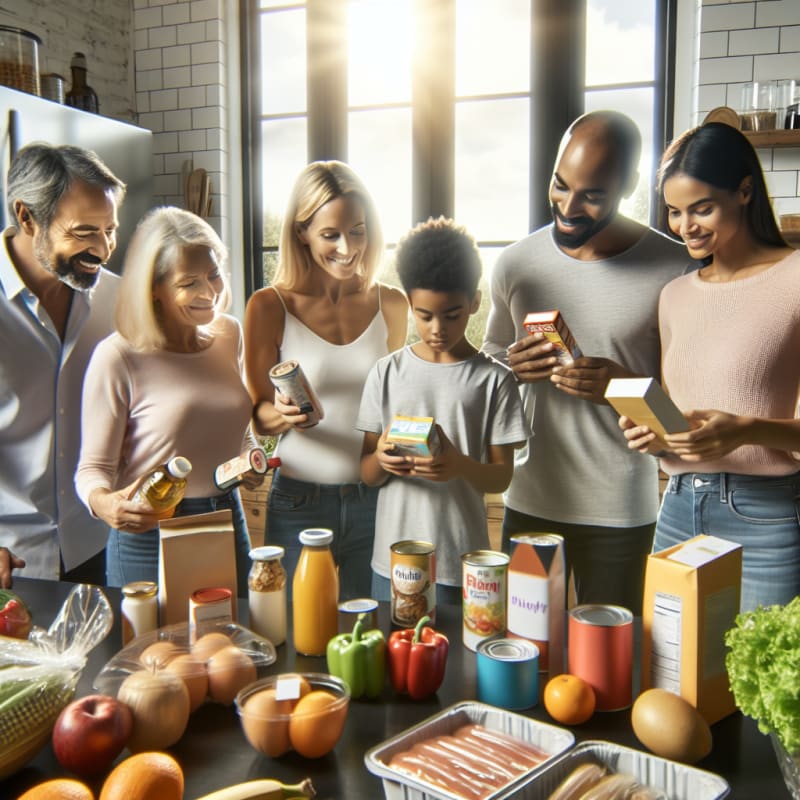How To Know If Food Contains E Numbers?
Understanding food additives, global labeling laws, and smart scanning for safer eating
It started with a bowl of pasta. Julia, a mother of two in Chicago, watched her son develop a rash after dinner. She scanned the ingredient list, but nothing stood out—until she noticed a string of numbers beginning with “E.” What did they mean? Was her son reacting to an ingredient she didn’t recognize? Like millions of parents and consumers worldwide, Julia faced the challenge of how to know if food contains E numbers—and what those numbers mean for her family’s health.
What Are E Numbers? A Global Perspective
E numbers are codes for substances used as food additives within the European Union (EU) and recognized internationally. These may include preservatives, colorants, flavor enhancers, and stabilizers. Each E number corresponds to a specific additive, such as E100 (Curcumin) or E621 (Monosodium Glutamate).[1]
- EU: E numbers are mandatory on ingredient lists, regulated by the European Food Safety Authority (EFSA).
- US: The Food and Drug Administration (FDA) uses chemical names or “approved color/additive” labels, not E numbers.[2]
Why Should You Care About E Numbers?
Awareness of E numbers is crucial for those with allergies, food sensitivities, or dietary preferences. Some additives have been linked to reactions in sensitive individuals, especially children.[3]
- Allergic reactions: Certain E numbers can trigger symptoms in sensitive people.
- Dietary restrictions: Vegans, vegetarians, and those with religious dietary laws may need to avoid specific additives.
- Global travel: Understanding E numbers helps when shopping abroad.
Recent news coverage, such as The New York Times and BBC Health, highlights growing consumer concern about food additives and transparency.
How To Know If Food Contains E Numbers? A Step-by-Step Guide
-
Read the Ingredient List:
- In the EU, look for codes like “E102” or “E330.”
- In the US, check for chemical names (e.g., “Sodium Benzoate”) or “artificial color/flavor.”
-
Look for Allergen Statements:
- Mandatory in both US and EU, but E numbers may not be flagged as allergens.
-
Use a Food Scanner App:
- Apps like Food Scan Genius decode ingredient lists and flag E numbers instantly.
-
Consult Official Lists:
- EFSA: EFSA Additives Database
- FDA: FDA Additive Status List
Pro Tip: Many E numbers have multiple names. For example, E621 is also known as Monosodium Glutamate (MSG).
Comparing Food Labeling Laws: US vs EU
| Aspect | United States (FDA) | European Union (EFSA) |
|---|---|---|
| Labeling of Additives | Chemical name or function (e.g., “Yellow 5”) | E number (e.g., “E102”) |
| Allergen Disclosure | Mandatory for top 9 allergens | Mandatory for 14 allergens |
| Transparency | May use “artificial flavor/color” | Must specify E number or additive name |
| Regulatory Body | FDA | EFSA |
For travelers or importers, understanding these differences is essential. The FoodNavigator recently reported on growing efforts to harmonize additive labeling for global consumers.
Common E Numbers and Their Functions
| E Number | Name | Function | Notes |
|---|---|---|---|
| E100 | Curcumin | Color | Derived from turmeric |
| E202 | Potassium Sorbate | Preservative | May cause mild irritation |
| E621 | Monosodium Glutamate (MSG) | Flavor enhancer | Controversial, generally recognized as safe |
| E951 | Aspartame | Sweetener | Not suitable for people with PKU |
How Food Scan Genius Simplifies E Number Detection
Food Scan Genius is a mobile app designed for consumers who want to make informed choices about food additives. Simply scan a product barcode or ingredient list, and the app instantly flags E numbers, explains their function, and alerts you to potential allergens or dietary conflicts.
- Real-time scanning and instant results
- Personalized alerts for allergies, vegan/vegetarian, or religious dietary needs
- Global database: covers both US and EU products
User Testimonial: “As a parent of a child with food sensitivities, Food Scan Genius has been a lifesaver. I can shop with confidence, knowing exactly what’s in every product. Highly recommend!” — Samantha L., London
Download Food Scan Genius today to make food shopping safer and smarter for your family.
Q&A: How To Know If Food Contains E Numbers?
Q: What are E numbers?
A: E numbers are codes for food additives used in the EU and recognized globally. They help standardize labeling and inform consumers about additives in packaged foods.
Q: Are E numbers safe?
A: Most E numbers are approved by regulatory bodies like the EFSA (EU) and FDA (US) after safety assessments. However, some individuals may react to specific additives.
Q: How can I avoid unwanted E numbers?
A: Read ingredient lists carefully, use food scanner apps like Food Scan Genius, and consult official additive databases.
Q: Do US foods have E numbers on labels?
A: No, US labels typically use chemical names or general terms. E numbers are primarily used in the EU and some other regions.
Q: Can I trust food scanner apps?
A: Leading apps like Food Scan Genius use up-to-date databases and regulatory information from both the US and EU for accurate results.
Conclusion: Empowering Consumers Through Knowledge and Technology
Julia’s story is a familiar one—parents and consumers everywhere want to make safe, informed choices. Understanding how to know if food contains E numbers is a vital step toward protecting your family’s health. By learning to read ingredient lists, comparing global labeling laws, and using smart tools like Food Scan Genius, you can shop with confidence—no matter where you are.
Stay informed, scan smart, and enjoy peace of mind at every meal.
References
- European Food Safety Authority: Food Additives
- US FDA: Overview of Food Ingredients, Additives & Colors
- PubMed: Food Additives and Child Health
- The New York Times: What Are E Numbers?
- BBC Health: Food Additives and Consumer Trust
- FoodNavigator: Food Additive Labeling EU vs US





